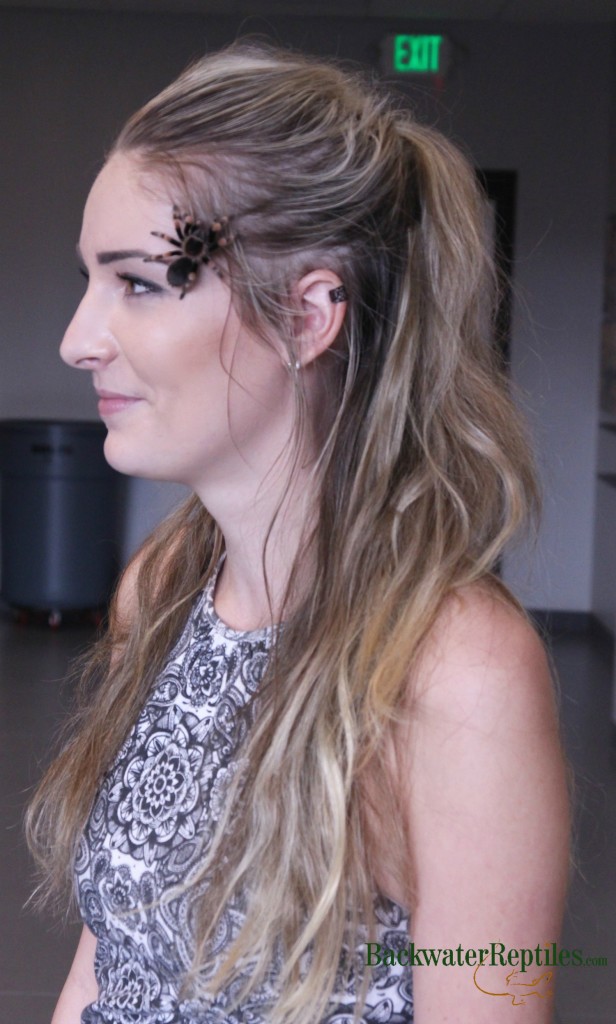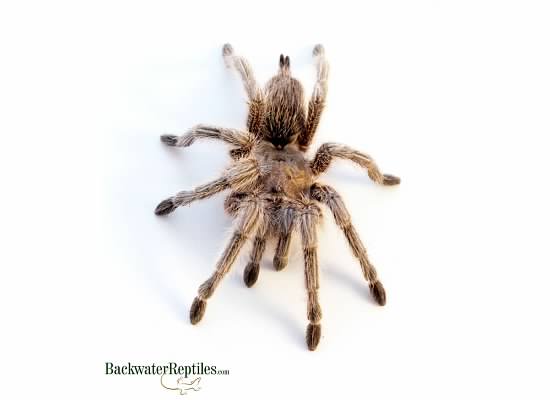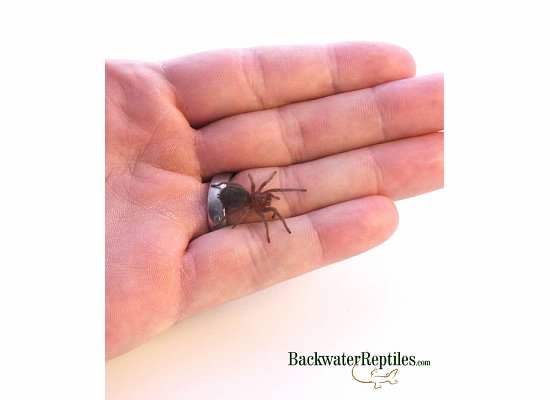Welcome to our list of the best pet tarantulas in the world. Pet spiders are very polarizing – people either love the idea of keeping a large spider in their home or they hate it. At Backwater Reptiles, we take care of spiders destined to be people’s pets every day, so we understand the appeal of arachnids.
Our goal for this blog article is to describe and detail our picks for the top four best pet tarantulas. Read on to find out which species we chose.
Mexican Red Knee Tarantula (Brachypelma smithi)
Red Knees are one of the most commonly kept pet tarantulas. They are readily available in chain pet stores and most people probably think of this species when they imagine what a tarantula looks like.
As you’ve probably surmised, Mexican red knee tarantulas are dark brown or black with distinctive red knee patches on the joints of their limbs. They grow to have a leg span of approximately seven inches. Males will live for around three to six years old, while females can live for around twenty five years.

Known for their reasonable temperaments, red knees usually don’t mind being handled. Although there is always some danger of being bit or getting urticating hairs in your skin, you don’t usually need to worry about this behavior with red knees. For the most part, although they can be skittish at first, red knees would rather hide from you than attack you.
We highly recommend a docile Mexican red knee tarantula if you are interested in acquiring a pet tarantula.
Rose Hair Tarantula (Grammostola rosea)
Rose hair tarantulas get their common name from the color of the hairs on their bodies. Some are more brightly colored than others with semi-metallic pink hairs, while others just have more of a dull pink tinge to them.
The rose hair is another species of tarantula that is known for its docile disposition. Many rose hair owners play with and handle their spiders on a regular basis without fear of being bitten or getting irritating hairs embedded in their skin.

If you purchase a spiderling rose hair, it will take approximately three to four years for it to reach maturity. A spiderling that starts off life around the size of a pencil eraser will eventually grow up to have a leg span between four to five inches.
Purchase your own pet rose hair tarantula from Backwater Reptiles.
Brazilian Black Tarantula (Grammastola pulchra)
Many people label the Brazilian black tarantula as the “ideal” pet spider. This is because they are a bold, jet black color with highly docile attitudes. They have simple care requirements and healthy appetites. They actually make great pet tarantulas for beginners and we’d even recommend them as a classroom pet.
Brazilian Blacks are terrestrial spiders, so although they don’t require a massive amount of space, we do highly recommend that your spider live in an enclosure that is wide and not super tall.

Interestingly enough, we do recommend keeping a water dish in the Brazilian Black’s enclosure. Even though you might never see your spider drink water, both spiderlings and adults need humidity, and a water dish helps to maintain that.
Ready for a classroom pet? Or just want a friendly pet spider? Backwater Reptiles has healthy pet Brazilian Black tarantulas for sale.
Golden Blue Leg Baboon Tarantula (Harpactira pulchripes)
We’ve included the rare golden blue leg baboon tarantula on our list because it is almost a “collector’s” spider. Because it is so hard to find in the U.S., it becomes a highly sought after spider for arachnid enthusiasts. Keep in mind that because it is so sought after, it does come with a fairly steep price point.
Although it begins life as a relatively unremarkable spiderling with a tinge of blue to it, the golden blue leg baboon tarantula matures into a beautiful, large spider with metallic blue legs.

Like all the spiders on this list, the golden blue leg baboon will happily eat crickets and other appropriately sized invertebrates. Spiderlings can eat a small cricket every day, whereas adults are perfectly happy eating once or twice a week.
If you’re a spider enthusiast, Backwater Reptiles does sell rare golden blue leg baboon tarantulas.
Conclusion – The Best Pet Tarantulas
We hope you’ve enjoyed reading our guide to the best pet tarantulas in the world. Indeed, tarantulas aren’t for everyone. But, if you’re not an arachnophobe, then we would recommend any of the spiders on this list as a pet. Most are pretty friendly and all of them are very easy to care for in captivity.
